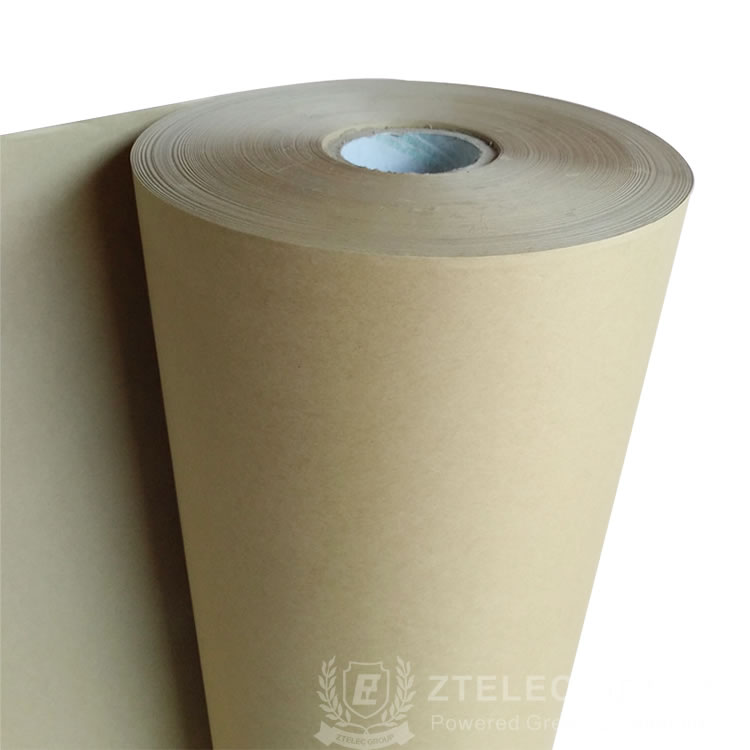Cable Insulation Paper Introduction
Cable insulation paper is a critical component in the electrical and telecommunications industries, serving as an effective barrier that enhances the performance and safety of electrical cables. This specialized paper is primarily used to insulate electrical conductors, preventing short circuits, electrical leakage, and protecting cables from environmental factors such as moisture and heat. As technology advances, the demand for reliable and efficient cable insulation continues to grow, making understanding cable insulation paper essential.

Composition and Properties
Cable insulation paper is predominantly made from cellulose fibers, which are derived from natural sources such as wood pulp. This cellulose-based material can be treated and processed to enhance its insulating properties. In some cases, synthetic materials like polyester or other polymers are used to provide additional benefits.
Key Properties
Electrical Insulation: One of the most crucial properties of cable insulation paper is its high dielectric strength, which allows it to withstand high voltages without conducting electricity. This property is vital for preventing electrical leakage and ensuring the safe operation of electrical systems.
Thermal Resistance: Cable insulation paper can maintain its insulating properties over a wide temperature range. This thermal resistance is critical for applications where cables may be exposed to high temperatures due to electrical resistance or environmental conditions.
Moisture Resistance: Many types of cable insulation paper are treated to resist moisture absorption. This characteristic is essential in preventing degradation of insulation performance, particularly in outdoor or humid environments.
Mechanical Strength: The paper provides structural support to cables, enhancing their durability. Its tensile strength helps protect the conductive materials within from physical damage during installation and use.
Chemical Resistance: Some formulations of cable insulation paper can resist degradation from oils, solvents, and other chemicals, extending the lifespan of cables in harsh environments.
Manufacturing Process
The manufacturing process of cable insulation paper involves several stages to ensure it meets the specific requirements of electrical insulation. Here’s an overview of the typical production process:
1.Raw Material Preparation: The process begins with sourcing high-quality cellulose fibers or synthetic materials. These materials are processed to remove impurities.
2.Pulping: If cellulose is used, it undergoes pulping to break down the fibers into a slurry. This slurry is then bleached to achieve the desired whiteness and purity.
3.Sheet Formation: The slurry is spread onto a moving belt, where it is dewatered to form sheets. These sheets are then pressed to remove excess water and increase density.
4.Drying: The pressed sheets are dried using heated rollers or air to remove remaining moisture. Proper drying is crucial for maintaining the paper's insulating properties.
5.Finishing and Treatment: The dried sheets may undergo additional treatments to enhance properties such as moisture resistance or flame retardancy. This step may also include cutting the sheets to specific sizes.
6.Quality Control: Throughout the manufacturing process, rigorous quality control measures are implemented to ensure that the insulation paper meets industry standards for electrical performance and physical durability.
Applications
Cable insulation paper is widely used across various sectors, including:
1.Power Cables: In high-voltage and medium-voltage power transmission systems, cable insulation paper helps maintain safe electrical operation. Its high dielectric strength prevents short circuits, while its thermal and moisture resistance ensures reliable performance in diverse environmental conditions.
2.Telecommunication Cables: In telecommunications, cable insulation paper is essential for maintaining signal integrity. It helps reduce crosstalk and interference between conductors, ensuring clear communication.
3.Transformers: Cable insulation paper is commonly used in transformer windings, providing essential insulation between the high and low voltage windings. This application is critical for the safe operation of electrical transformers, which are vital in power distribution.
4.Industrial Applications: In industries such as automotive and manufacturing, cable insulation paper is used to insulate wiring in motors and control panels, protecting against electrical failures and enhancing overall safety.
5.Renewable Energy: With the rise of renewable energy sources like wind and solar, cable insulation paper is increasingly used in the cables that connect solar panels and wind turbines to the grid, ensuring efficient energy transmission.
Benefits of Cable Insulation Paper
The use of cable insulation paper offers several advantages:
Safety: By preventing electrical leakage and short circuits, cable insulation paper enhances the safety of electrical installations, reducing the risk of fires and electrical hazards.
Durability: Its mechanical strength and resistance to environmental factors extend the lifespan of cables, minimizing maintenance and replacement costs.
Efficiency: Proper insulation ensures optimal performance of electrical systems, leading to increased efficiency and reduced energy losses.
Versatility: Cable insulation paper can be tailored to meet specific requirements, making it suitable for a wide range of applications across different industries.
Future Trends
As technology evolves, the demand for advanced cable insulation materials continues to grow. Innovations in materials science are leading to the development of new types of insulation paper that offer improved performance characteristics. Research into biodegradable and environmentally friendly materials is also gaining momentum, aligning with global sustainability goals.
Moreover, the increasing complexity of electrical systems, driven by advancements in renewable energy and electric vehicles, necessitates higher performance standards for cable insulation. Manufacturers are focusing on enhancing the thermal, mechanical, and electrical properties of insulation paper to meet these demands.
Conclusion
Cable insulation paper plays a vital role in the safe and efficient operation of electrical and telecommunications systems. Its unique properties make it an indispensable component in various applications, from power transmission to communication networks. As industries continue to evolve and demand more reliable and efficient insulation solutions, cable insulation paper will remain a key focus for innovation and development. Understanding its properties, applications, and manufacturing processes is essential for engineers, manufacturers, and professionals involved in electrical systems.
Ztelec Group is a professional manufacturer of high-quality electrical insulation materials with more than 60 years of manufacturing experience. If you need more product information and quotes, please contact us.